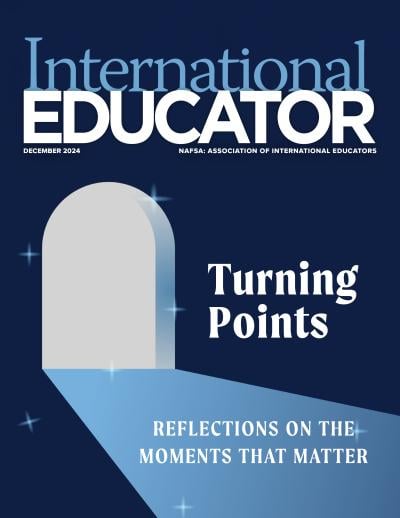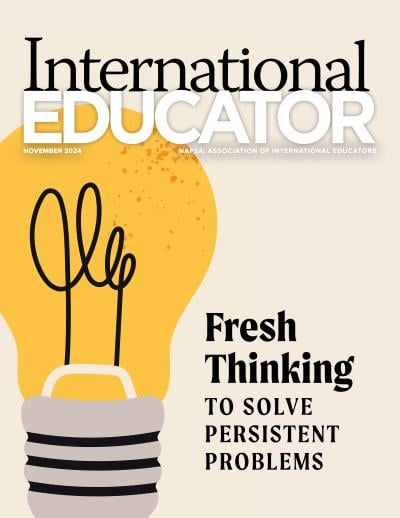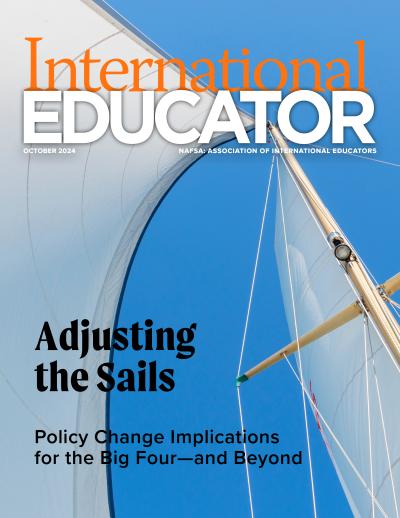Productive Partnerships

International partnerships serve as fundamental tools for international engagement. These partnerships help institutions in the process of internationalizing their academic curricula, research, and service—from amplifying the capacity for teaching and research to injecting international dimensions into degree and study programs.
A broad spectrum of partnership types, modes, and means of engagement exist, as well as many methods of assessing, scaling, and sustaining them institutionally. When developed and used effectively, partnerships can support comprehensive international programs, research, and global engagement, allowing institutions to maximize their strengths while also closing gaps and deepening connections abroad. Partnerships enable institutions to do more with less by building on comparative strengths and utilizing complementary resources. However, as with any tool, partnerships can do these things only if designed and implemented with focus and vision.
Myths About Partnerships and Agreements
While partnerships have the trappings of service-related tools or instruments, they also operate in a behavioral space of organizational relationships; like any relationship, they must be stewarded and, at times, curated. Just as an individual likely cannot have hundreds of close friends, an institution likely cannot sustain hundreds of successful, meaningful partnerships. In sum, partnerships cannot and should not be measured by the quantity of signed contracts or agreements.
The mere existence of a contract does not necessarily equate to the existence of an active, beneficial partner relationship, though the two are related. This faulty equivalence has been prevalent across the field of international higher education, leading many institutions to tout the sheer number of agreements as evidence of global connections and engagement.
In reality, however, an international partnership, simply put, involves at least two entities with different contexts and cultures working together to achieve mutually defined and mutually beneficial goals and objectives. While this may seem straightforward, managing relationships across cultures and institutional contexts requires considerable planning and finesse.
Trust Between Partners
Just as the myth that agreements and partnerships are synonymous has prevailed in the field, other myths often surround the discourse of international partnership development and can undercut success. For instance, academic faculty members may assume that partnerships should be “uncomplicated,” often meaning that institutions should just sign a contract and move forward with the collaboration.
While striving for effortless and efficient partner engagement should be a goal of any partnership manager, navigating this terrain is often complex and, at times, quite complicated. Achieving trust, one of the core tenets of a productive partnership, involves both short-term and long-term investments of time, resources, and patience.
Additionally, institutions often operate under the assumption that high-level leadership visits serve to ignite long-lasting relationships, but depending on the culture of the institution, this may or may not be the case. Institutions that operate in a deeply hierarchical and centralized fashion may benefit from this theory, but those with stronger traditions of responsibility-centered management and faculty governance will not. Thus, there is a critical need for partnership managers to understand their institutions well and be able to translate organizational behavior to their partners effectively in order to cultivate successful relationships.
The partner engagement framework provides a structure for interpreting institutional culture as it relates to international partnerships, revealing the pros and cons of different contexts—from top-down to bottom-up cultivation strategies and from a portfolio of numerous formal partners to a select few.
Institutions can use the partnership engagement framework to identify not only where they presently are in their partnership development strategy, but also where they want to go. For instance, an institution that is currently positioned in quadrant I (highly top-down with many formal partners) will have to guard against purely ceremonial engagement while continuing to cultivate the support of leadership. Correspondingly, leaders of internationalization and partnership managers in such a context may have to shift the balance of engagement by involving more faculty in a few partnerships that will continue to have the support of leadership.
Conversely, an institution in quadrant III (bottom-up engagement with few formal partners) may struggle to reflect accurately the depth of institutional connections, while also benefitting from considerable faculty collaboration. In order to have better institutional insight into international engagement, senior international officers and partnership managers in such scenarios will likely need to employ strategies to uncover and elevate these institutional connections.
Whatever the organizational structure and objectives, institutional international partnerships have emerged as a primary component of comprehensive internationalization strategies, supporting institutions as they diversify their educational offerings, amplify their research portfolios, augment their corporate engagement strategies, and extend the impact of their services. In the age of globalization, with its core research
challenges and increasing student demand, institutions are now positioning themselves to collaborate with one another for the long term as effectively and efficiently as possible.
Editor’s Note: This piece originally appeared as the introduction to NAFSA’s International Partnerships Series, a collection of digital downloads that delve into the parameters of international partnerships and identify sound practices for cultivating partnerships that foster deep, sustainable connections. Three digital downloads—International Partnership Dynamics and Types, Educational Mobility Partnerships, and International Research Partnerships—are available in the NAFSA Bookstore.
NAFSA Resources
About International Educator
International Educator is NAFSA’s flagship publication and has been published continually since 1990. As a record of the association and the field of international education, IE includes articles on a variety of topics, trends, and issues facing NAFSA members and their work.
From in-depth features to interviews with thought leaders and columns tailored to NAFSA’s knowledge communities, IE provides must-read context and analysis to those working around the globe to advance international education and exchange.
About NAFSA
NAFSA: Association of International Educators is the world's largest nonprofit association dedicated to international education and exchange. NAFSA serves the needs of more than 10,000 members and international educators worldwide at more than 3,500 institutions, in over 150 countries.
NAFSA membership provides you with unmatched access to best-in-class programs, critical updates, and resources to professionalize your practice. Members gain unrivaled opportunities to partner with experienced international education leaders.














